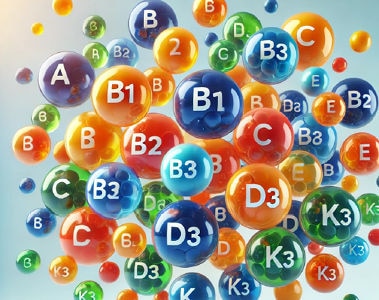As mid-2025 approaches, the global vitamin market remains quiet, with limited activity and cautious buyer sentiment. Inventory drawdowns continue, and restocking is expected to begin in June, potentially tightening supply as Q3 nears. Market fundamentals remain mixed, with some products trending stable to firm while others remain under pressure due to weak demand or persistent oversupply.
Tariff changes are also shaping the outlook. Most key vitamins—such as A, B1, B2, B3, B5, B6, B9, B12, C, and E—are exempt. However, Vitamin D3, as well as Biotin and B12 forms will be subject to full duty. Combined with the ongoing 20% IEEPA tariff and reduced import volumes, these changes are expected to impact pricing and availability in the second half of the year, but this could change as the situation remains fluid.
Vitamin Market Outlook: Recovery, Volatility, and Shifting Supply Dynamics
The global vitamin market continues to navigate a complex landscape of supply constraints, and evolving trade dynamics. A major European producer, after declaring force majeure last July, is preparing to restart Vitamin E production. While this marks a step toward recovery, full operations may not resume until later in the year, leaving buyers cautious about supply reliability. The market remains sluggish, adding pressure to already softening prices. Seasonal shutdowns and therefore reduced offer from Chinese suppliers could tighten availability slightly, potentially balancing out the impact of the European producer’s return. For now, demand of vitamin E remains sluggish, and the market is expected to remain slow in the short-term putting pressure on pricing.
Vitamin A supply outlook remains uncertain. The same European producer announced the lift of their force majeure on their A500 forms; however, force majeure remains in place for all other A forms (such as A1000 and AD3), VE and carotenoids and it is unclear when it will be lifted. dsm-firmenich ANH will shut down for 14 weeks (July–October). Other producers also plan shutdowns, with dates yet to be confirmed. Buyers remain cautious, anticipating oversupply and continued price declines, particularly with a potential new Chinese entrant adding to global availability. Overall sentiment remains rather bearish.
Vitamin D3 continues to be one of the most volatile segments, with prices staying elevated due to ongoing supply constraints and limited availability of a key intermediate. Prompt offers in North America are scarce and mostly limited to small volumes. High import duties are contributing to upward pressure despite some signs of softening in China, prompting some buyers to secure supply early in anticipation of further increases.
In contrast, Vitamin C prices continue to decline in the context of price war (and despite announcement of extended shutdowns) among Chinese producers. Global demand remains weak and so far, there are no signs of a meaningful recovery.
Among the B vitamins, conditions vary widely. Vitamin B1 remains in rather tight supply, with elevated prices and limited new shipments. Buyers are hesitant to commit to long-term contracts, hoping for better deals, but low stock levels may keep prices firm in June and beyond. While B1 is exempt from reciprocal tariffs, it remains subject to the 20% IEEPA tariff.
Vitamin B2 continues to show a significant price gap between EU and non-EU sources, with new suppliers aggressively competing for market share. This has pressured traditional producers and softened prices, particularly outside the EU. In North America, prices have eased slightly due to competitive Chinese offers. With strong global supply and low buying activity, the market is expected to remain stable to slightly weak.
Vitamin B3 pricing remains volatile. After firming up late last year due to intermediate shortages, prices softened again as demand slowed and Chinese suppliers pushed aggressive offers, leading to a market-wide drop. With pre-tariff stock running low and raw material costs still high, a gradual price increase is likely. Availability remains rather high but could come under pressure following the announcement of an interruption at Arxada’s Visp plant. Additionally, the impact of an incident at a large insecticide plant (with connected intermediates with vitamin B3) remains to be seen.
Vitamin B5 prices have softened as new producers compete for market share, keeping the market oversupplied. Prices remain soft at historically low levels, though U.S. rates have edged up as non-tariff stock is depleted. The impact of tariffs is becoming more visible, and lower-priced offers may soon become scarce. Despite this, demand remains quiet, and no major changes are expected in the near term.
Vitamin B6 prices remain rather stable after nearly doubling over the past year due to limited supply from Chinese producers. The market remains firm for now, though new entrants expected in Q3 2025 could shift the balance. A major producer has temporarily withdrawn in hopes of higher prices, but product remains available. Longer-term pricing may ease as new manufacturers begin production later this year.
Vitamin B7 (Biotin) prices remain at historic lows, with some traders briefly causing stockouts by accumulating inventory. However, most buyers have already secured long-term coverage, limiting any upward momentum. Production has ramped up again, keeping supply steady. A new player entering the market later this year is expected to add to the oversupply, reinforcing the bearish outlook. Prices are expected to stay flat or decline slightly in the near term.
Vitamin B9 (Folic Acid) prices have risen from record lows and remained rather steady in recent months. Despite limited demand, reduced raw material availability is keeping prices rather firm. Export volumes remain low, and the 20% tariff continues to apply, which could drive prices higher as Q3 demand picks up. For now, the outlook remains stable with no major changes expected.
Vitamin B12 prices have edged down slightly due to overcapacity, though overall pricing remains stable. Despite weak demand, tariffs remain a concern, with B12 forms subject to both the 20% IEEPA and reciprocal tariffs, totaling 50%. So far, this hasn’t led to significant domestic price hikes, but higher offers are starting to appear, suggesting potential increases ahead.
Conclusion
As the vitamin market moves into the second half of 2025, uncertainty continues to shape both pricing and supply dynamics. While some segments show early signs of stabilization, others remain under pressure from oversupply, weak demand, or shifting trade policies. The upcoming tariff changes, particularly those affecting Vitamin D3, Biotin, and B12 forms are expected to influence market behavior in Q3, especially as inventories tighten and restocking begins. With global supply chains adjusting and new players entering the field, buyers and suppliers alike will need to stay agile in navigating what remains a complex and evolving landscape.



